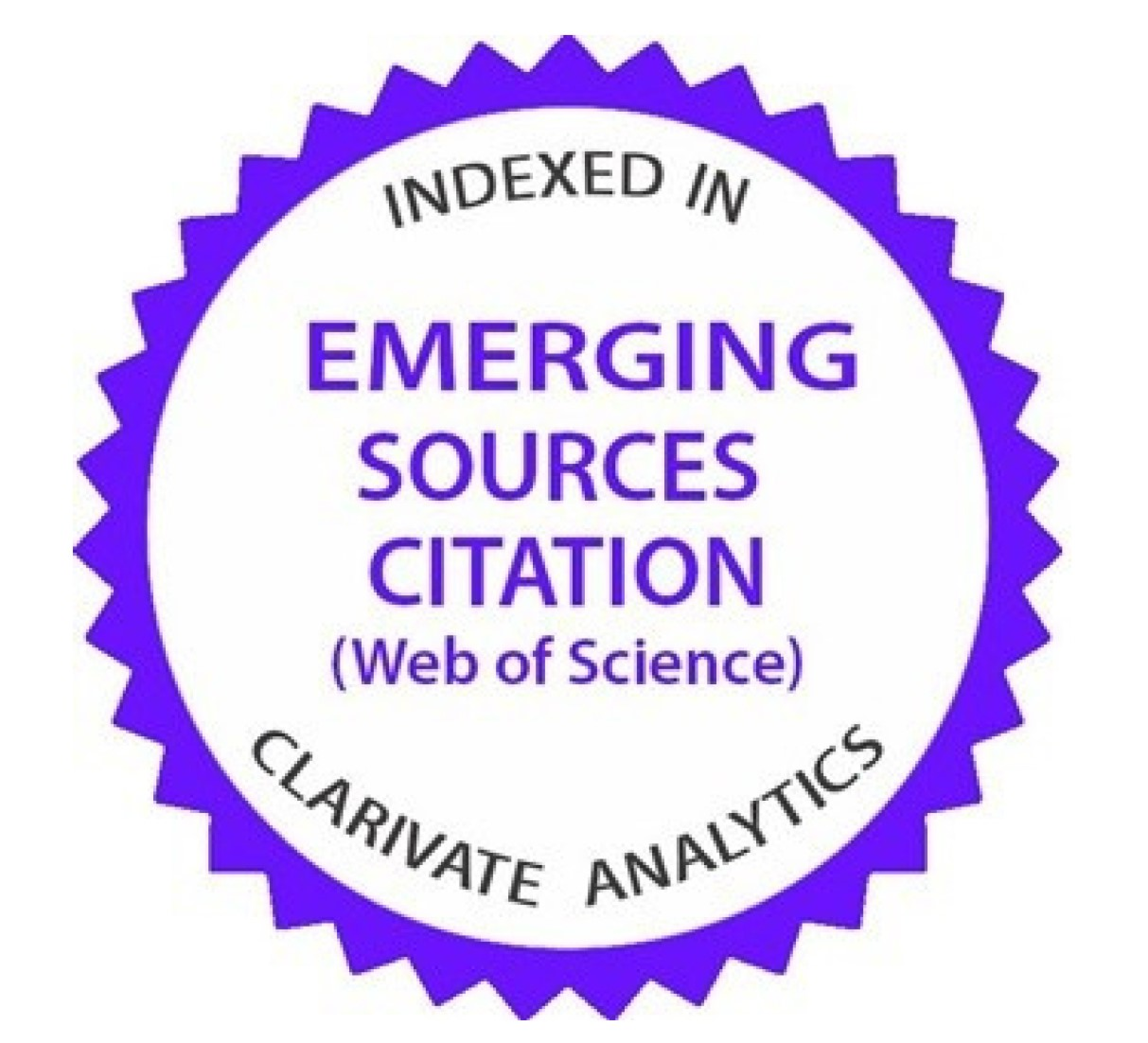The impact of people’s participation on public policy satisfaction in Vietnam
Downloads
People’s participation in public decision-making not only helps ensure transparency and accountability but also contributes to improving their satisfaction with government policies and operations. This study examines whether transparency in decision-making, trust in public agencies, access to information, and people’s awareness of their rights and responsibilities play an important role in promoting their participation. The study also explores whether this participation directly affects people’s satisfaction with public decisions and policies. This study uses mixedmethod approach through the SEM linear regression model. The analysis of the results shows that transparency, trust, information accessibility and citizen awareness have a positive and significant impact on the level of their participation in public activities. However, increased participation does not necessarily lead to higher levels of satisfaction with public policies, especially when the participation process does not meet people’s expectations or lacks transparency and efficiency. The study concludes that, to improve people’s satisfaction, it is necessary not only to promote participation, but also to improve the quality of this process, ensuring that participation is substantive and has a clear impact on public decisions. As such, specific recommendations are made to improve public policy and enhance people’s participation and satisfaction in the context of modern public governance.
Adil M, Mediaty M, & Imran H (2022) Accountability and transparency in the public and private sector. International Journal of Humanities Education and Social Sciences 1 (6):167. https://doi.org/10.55227/ijhess.v1i6.167.
Ariel Y, Elishar V, & Weimann-Saks D (2024) Analysing political engagement in a multimedia, multielections environment: Predictive factors in an unpredictable political reality. The Journal of International Communication. https://doi.org/10.1080/13216597.2024.2340710.
Bastos D, Fernández-Caballero A, Pereira A, & Rocha NP (2022) Smart City Applications to Promote Citizen Participation in City Management and Governance: A Systematic Review. Informatics 9 (4):89. https://doi.org/10.3390/informatics9040089.
Bauhr M & Grimes M (2014) Indignation or resignation: The implications of transparency for societal accountability. Governance 27 (2):291-320. https://doi.org/10.1111/gove.12033.
Bavaresco G, Dickson G, Camargo P, Santos T, & Mezzadri F M (2024) Transparency and accountability in Brazilian National Sport Organisations. Cogent Social Sciences 10 (1):2355560. https://doi.org/10.1080/23311886.2024.2355560.
Bertot JC, Jaeger PT, & Grimes JM (2010) Using ICTs to create a culture of transparency: E-government and social media as openness and anti-corruption tools for societies. Government Information Quarterly 27 (3):264-271. https://doi.org/10.1016/j.giq.2010.03.001.
Bobbio L (2019) Designing effective public participation. Policy and Society 38 (1):41-57. https://doi.org/10.1080/14494035.2018.1511193.
Bollen KA (1989) Structural Equation with Latent Variables. New York: John Wiley & Sons. https://onlinelibrary.wiley.com/doi/book/10.1002/9781118619179.
Campbell JW (2023) Public participation and trust in government: Results from a vignette experiment. Journal of Policy Studies 38 (2):23-31. https://doi.org/10.52372/jps38203.
Castañeda-Sánchez WA, Julca-Guerrero FC, Vega-Huincho F, Roldan Polo Escobar B, Matos Quesada JC & Pascual Albitres RG (2023) Governance and citizen satisfaction in intermediate Cities of Ancash (Peru). Migration Letters 20 (S9):56-66. https://www.migrationletters.com/article/view/4778.
Chadwick A & May C (2003) Interaction between states and citizens in the age of the Internet: “E-Government” in the United States, Britain, and the European Union. Governance 16 (2):271-300. https://doi.org/10.1111/1468-0491.00216.
Christensen T & Lægreid P (2005) Trust in government: The Relative Importance of Service Satisfaction, Political Factors, and Demography. Public performance & management review 28 (4):487-511. https://doi.org/10.1080/15309576.2005.11051848.
Cleff T (2019) Factor Analysis. In: Applied Statistics and Multivariate Data Analysis for Business and Economics. Cham: Springer. https://doi.org/10.1007/978-3-030-17767-6_13.
Collins BK, Kim HJ, & Tao J (2019) Managing for citizen satisfaction: Is good not enough? Journal of Public and Nonprofit Affairs 5 (1):21-38. https://doi.org/10.20899/jpna.5.1.21-38.
Cujbă LG (2022) Transparency and citizens’ participation: A framework for a comparative analysis of local public administration. Applied Research in Administrative Sciences 3 (1):35-45. https://doi.org/10.24818/ARAS/2022/3/1.04.
Delli Carpini MX & Keeter S (1996) What Americans Know about Politics and Why It Matters. New Haven: Yale University Press. https://core.ac.uk/reader/76383250.
Fishkin JS (1991) Democracy and Deliberation: New Directions for Democratic Reform. New Haven: Yale University Press. https://dokumen.pub/democracy-and-deliberation-new-directions-fordemocraticreform-9780300156683.html.
Florini A (2007) The Right to Know: Transparency for an Open World. New York: Columbia University Press. https://dokumen.pub/the-right-to-know-transparency-for-an-open-world-0231141580-9780231141581.html.
Fornell C & Larcker DF (1981) Evaluating structural equation models with unobservable variables and measurement error. Journal of Marketing Research 18 (1):39-50. https://doi.org/10.1177/002224378101800104.
Fox J (2007) The uncertain relationship between transparency and accountability. Development in Practice 17 (4-5):663-671. https://doi.org/10.1080/09614520701469955.
Fung A (2015) Putting the public back into governance: The challenges of citizen participation and its future. Public Administration Review 75 (4):513-522. https://doi.org/10.1111/puar.12361.
Goretzko D, Pham TTH, & Bühner M (2019) Exploratory factor analysis: Current use, methodological developments and recommendations for good practice. Current Psychology 40 (9):3510-3521. https://doi.org/10.1007/s12144-019-00300-2.
Grimmelikhuijsen S (2012) Linking transparency, knowledge, and citizen trust in government: An experiment. International Review of Administrative Sciences 78 (1):50-73. https://doi.org/10.1177/0020852311429667.
Guillamón MD, Cuadrado-Ballesteros B, & Ríos AM (2023) Transparency in public administrations: A structured literature review. Journal of Public Budgeting, Accounting & Financial Management 35 (5):537-567. https://doi.org/10.1108/JPBAFM-10-2022-0158.
Hair JF, Black WC, Babin BJ, & Anderson RE (2010) Multivariate Data Analysis (7th ed). New Jersey: Prentice-Hall, Inc. https://www.drnishikantjha.com/papersCollection/Multivariate%20Data%20Analysis.pdf.
Hair JF, Hult GTM, Ringle CM, & Sarstedt M (2017) A Primer on Partial Least Squares Structural Equation Modeling (PLS-SEM) (2nd ed). Thousand Oaks: SAGE Publications. https://eli.johogo.com/Class/CCU/SEM/_A%20Primer%20on%20Partial%20Least%20Squares%20Structural%20Equation%20Modeling_Hair.pdf.
Hardin R (2002) Trust and Trustworthiness. New York: Russell Sage Foundation. https://www.researchgate.net/publication/328405908_Trust_and_Trustworthiness.
He AJ & Ma L (2020) Citizen participation, perceived public service performance, and trust in government: Evidence from health policy reforms in Hong Kong. Public Performance & Management Review. https://doi.org/10.1080/15309576.2020.1780138.
Hong SG & Lee D (2023) Development of a citizen participation public service innovation model based on smart governance. Service Business 17: 669-694. https://doi.org/10.1007/s11628-023-00536-w.
Huang CC, Wang YM, Wu TW, & Wang PA (2013) An empirical analysis of the antecedents and performance consequences of using the moodle platform. International Journal of Information and Education Technology 3 (2):217. https://www.ijiet.org/papers/267-IT0040.pdf.
Huda MN & Suharno S (2023) The role of community-based democracy volunteers in increasing the voter participation in general elections. Masyarakat, Kebudayaan dan Politik 36 (1):72-87. https://doi.org/10.20473/mkp.V36I12023.72-87.
Jashari M & Pepaj I (2018) The Role of the Principle of Transparency and Accountability in Public Administration. Acta Universitatis Danubius. Administratio 10 (1). https://journals.univ-danubius.ro/index.php/administratio/article/view/5038/0.
Johnson GE (2021) The law: Government transparency and public access. Presidential Studies Quarterly 51 (3):705-724. https://doi.org/10.1111/psq.12731.
Kassa ET & Ning J (2023) A systematic review on the roles of knowledge management in public sectors: Synthesis and way forwards. Heliyon 9: e22293. https://doi.org/10.1016/j.heliyon.2023.e22293.
Kline RB (2015) Principles and Practice of Structural Equation Modeling (4th ed). New York: Guilford Press. https://dl.icdst.org/pdfs/files4/befc0f8521c770249dd18726a917cf90.pdf.
Kumagai S & Iorio F (2018) Building trust in government through citizen engagement. World Bank. https://documents1.worldbank.org/curated/en/440761581607070452/pdf/Building-TrustinGovernment-through-Citizen-Engagement.pdf.
Lee Y & Schachter HL (2019) Exploring the relationship between trust in government and citizen participation: What the world values survey tells us about stealth and deliberative democracy assumptions. International Journal of Public Administration. https://doi.org/10.1080/01900692.2018.1465956.
Levi M & Stoker L (2000). Political trust and trustworthiness. Annual Review of Political Science 3: 475-508. https://doi.org/10.1146/annurev.polisci.3.1.475.
Meijer AJ, Curtin D, & Hillebrandt M (2012) Open government: Connecting vision and voice.International Review of Administrative Sciences 78 (1):10-29. https://doi.org/10.1177/0020852311429533.
Metwally E & Samir E (2024) Assessing citizen satisfaction indicators for urban public services to enhance quality of life in Sharm el-Sheikh. Ain Shams Engineering Journal 15: 102841. https://doi.org/10.1016/j.asej.2024.102841.
Mountasser T & Abdellatif M (2023) Digital Transformation in public administration: A systematic literature review. International Journal of Professional Business Review 8 (10):1-27. https://doi.org/10.26668/businessreview/2023.v8i10.2372.
Nabatchi T & Leighninger M (2015) Public Participation for 21st Century Democracy. New York: Jossey-Bass. https://doi.org/10.1002/9781119154815.
Naranjo-Zolotov M, Oliveira T, Casteleyn S, & Irani Z (2019) Continuous usage of e-participation: The role of the sense of virtual community. Government Information Quarterly 36 (4):536-545. https://doi.org/10.1016/j.giq.2019.05.009.
Newig J, Challies E, Jager NW, Kochskämper E, & Adzersen A (2018) The environmental performance of participatory and collaborative governance: A framework of causal mechanisms. Policy Studies Journal 46 (2):269-297. https://doi.org/10.1111/psj.12209.
Norris P (2011) Democratic deficit: Critical citizens revisited. Cambridge: Cambridge University Press. https://assets.cambridge.org/97805211/97519/frontmatter/9780521197519_frontmatter.pdf.
Odoom D, Mensah EO, Dick-Sagoe C, Lee KY, Opoku E, & Obeng-Baah J (2024) Examining the level of public awareness on the Sustainable Development Goals in Africa: An empirical evidence from Ghana. Environment, Development and Sustainability 26: 6221-6238. https://doi.org/10.1007/s10668-023-02959-x.
OECD (2020) Transparency, communication, and trust: The role of public communication in responding to the wave of disinformation about the new coronavirus. https://www.oecd.org/en/publications/transparency-communication-and-trust_bef7ad6e-en.html.
Peixoto T & Sifry ML (2017) Civic tech in the global south: Assessing technology for the public good. The World Bank. https://openknowledge.worldbank.org/entities/publication/3d195678-ac78-536e9c2cc269f1b48ed2.
Pecorari N & Cuesta J (2024) Citizen participation and political trust in Latin America and the Caribbean:A machine learning approach. The European Journal of Development Research. https://doi.org/10.1057/s41287-024-00633-0.
Pozen DE (2019) Seeing transparency more clearly. Public Administration Review. https://doi.org/10.1111/puar.13137.
Randma-Liiv T & Lember V (2022) Engaging Citizens in Policy Making: E-Participation Practices in Europe. Cheltenham: Edward Elgar Publishing. https://www.researchgate.net/publication/364128810_Engaging_Citizens_in_Policy_Making_e-Participation_Practices_in_Europe.
Revez A, Dunphy N, Harris C, Rogan F, Byrne E, McGookin C, Bolger P, Ó Gallachóir B, Barry J, Ellis G, O’Dwyer B, Boyle E, Flood S, Glynn J, & Mullally, G (2022) Mapping emergent public engagement in societal transitions: A scoping review. Energy, Sustainability and Society 12 (2). https://doi.org/10.1186/s13705-021-00330-4.
Ruhlandt RWS (2018) The governance of smart cities: A systematic literature review. Cities 81: 1-23. https://doi.org/10.1016/j.cities.2018.02.014.
Russell J Dalton (2006) Citizen Politics: Public Opinion and Political Parties in Advanced Industrial Democracies (4th ed). Washington: CQ Press. https://www.scirp.org/reference/referencespapers?referenceid=985963.
Schmidthuber L, Piller F, Bogers M, & Hilgers D (2019) Citizen participation in public administration: Investigating open government for social innovation. R&D Management 49 (1):1-12. https://doi.org/10.1111/radm.12312.
Shaikh Khatibi F, Dedekorkut-Howes A, Howes M, & Torabi E (2021) Can public awareness, knowledge and engagement improve climate change adaptation policies? Discover Sustainability 2 (18). https://doi.org/10.1007/s43621-021-00024-z.
Taber KS (2018) The use of Cronbach’s alpha when developing and reporting research instruments in science education. Research in Science Education 48 (6):1273-1296. https://doi.org/10.1007/s11165-016-9602-2.
Trong H & Ngoc CNM (2008) Analyze data with SPSS. Statistics Publishing House. https://jes.edu.vn/phan-tich-du-lieu-nghien-cuu-voi-spss-tap-1-tap-2-pdf.
Tyran JR & Feld LP (2001) Why do people obey the law? Experimental evidence from the provision of public goods. Journal of Public Economics. https://www.researchgate.net/publication/4931107_Why_People_Obey_the_Law_Experimental_Evidence_from_the_Provision_of_Public_Goods.
United Nations (2020) E-Government survey 2020 digital government in the decade of action for sustainable development with addendum on COVID-19 response. https://publicadministration.un.org/egovkb/Portals/egovkb/Documents/un/2020Survey/2020%20UN%20E-Government%20Survey%20(Full%20Report).pdf.
Van Twist A, Ruijer E, & Meijer A (2023) Smart cities & citizen discontent: A systematic review of the literature. Government Information Quarterly 40: 101799. https://doi.org/10.1016/j.giq.2022.101799.
Wang Z, Liu H, Li T, Zhou L, & Zhou M (2023) The impact of internet use on citizens’ trust ingovernment: The Mediating Role of Sense of Security. Systems 11 (47):1-19. https://doi.org/10.3390/systems11010047.
WeResearch (2021) Assessing public participation in policy-making process: Phase 2. United Nations Development Programme. https://www.undp.org/sites/g/files/zskgke326/files/2022-06/undp_ge_dg_par_assessing-public-participation_research_phase%202_eng.pdf.
World Bank (2020) Enhancing government effectiveness and transparency. World Bank Group. https://documents1.worldbank.org/curated/en/235541600116631094/pdf/Enhancing-GovernmentEffectiveness-and-Transparency-The-Fight-Against-Corruption.pdf.
Xia Y & Yang Y (2018) RMSEA, CFI, and TLI in structural equation modeling with ordered categorical data: The story they tell depends on the estimation methods. Behavior Research Methods 51 (2):409-428. https://doi.org/10.3758/s13428-018-1055-2.
Xu H & Zhu W (2020) Evaluating the impact mechanism of citizen participation on citizen satisfaction in a smart city. Urban Analytics and City Science 48 (8). https://doi.org/10.1177/2399808320980746.
Zhao B, Cheng S, Schiff KJ, & Kim Y (2023) Digital transparency and citizen participation: Evidence from the online crowdsourcing platform of the City of Sacramento. Government Information Quarterly 40 (4):101868. https://doi.org/10.1016/j.giq.2023.101868.
Zolotov MN, Oliveira T, Cruz-Jesus F, & Martins J (2018) Satisfaction with e-participation: A model from the citizen’s perspective, expectations, and affective ties to the place. In: Rocha Á, Adeli H, Reis LP, & Costanzo S (ed). Trends and Advances in Information Systems and Technologies. Springer. https://doi.org/10.1007/978-3-319-77703-0_102.

This work is licensed under a Creative Commons Attribution-NonCommercial-ShareAlike 4.0 International License.
Copyright of this journal is possession of Editorial Board and Journal Manager, by the knowledge of the author, while the moral right of the publication belongs to the author.
The formal legal aspect of journal publication accessibility refers to Creative Commons Attribution-NonCommercial-ShareAlike (CC BY-NC-SA), implies that publication can be used for non-commercial purposes in its original form (cannot be modified).
Every publication (printed/electronic) are open access for educational purposes, research, and library. Other than the aims mentioned above, the editorial board is not responsible for copyright violation.
















